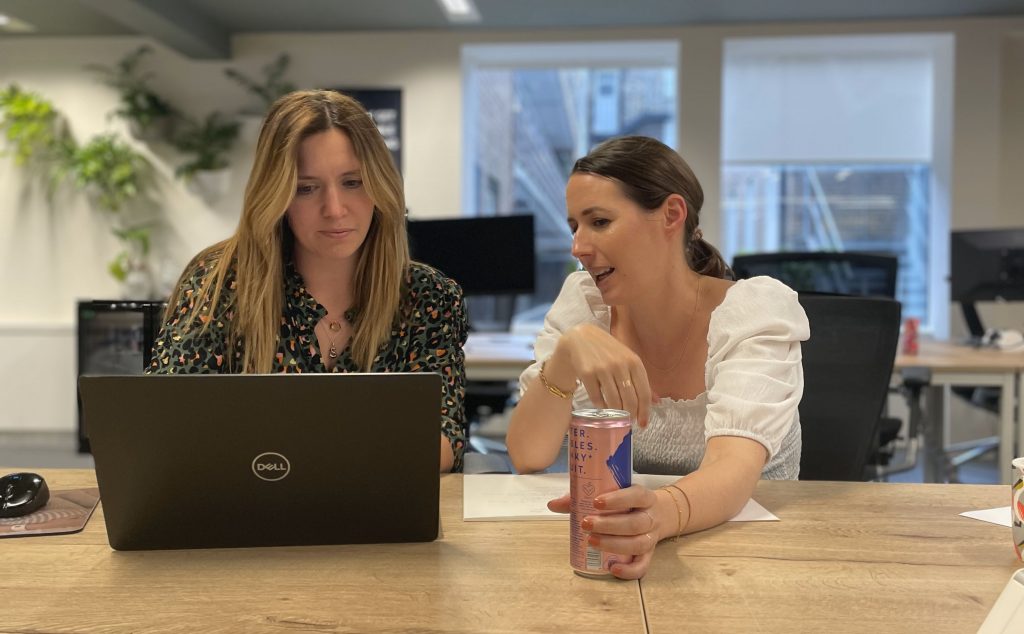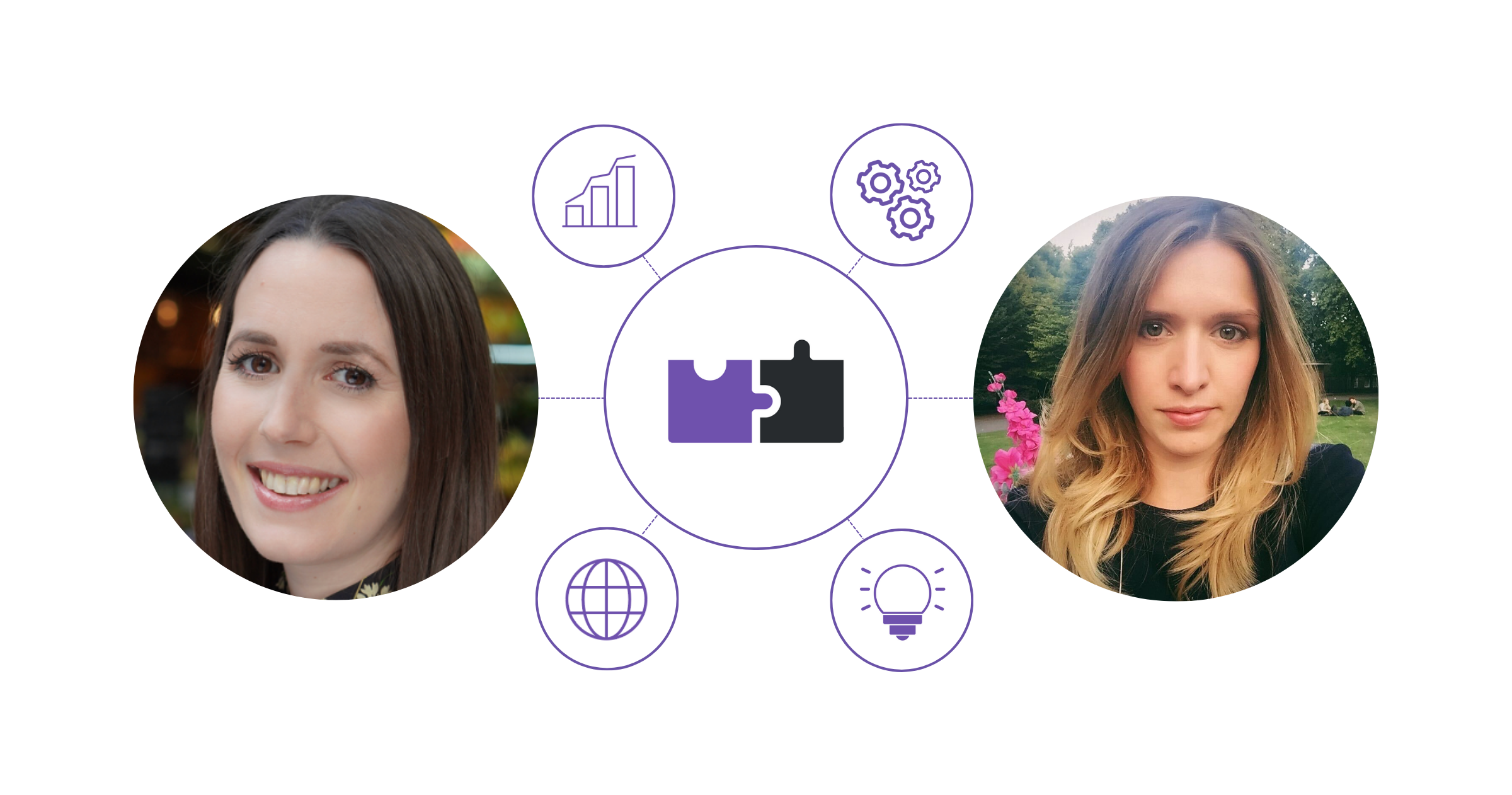
When Holly met Sally: a conversation about job sharing
Holly Jefferies and Sally Brown have recently celebrated their first anniversary as job sharers in a senior Associate Director role. We asked them to explain how they made it work.
Sally: As seems to be the trend at the moment, I had a look at what ChatGPT has to say about a successful job share.
The AI bot reckons a good job share takes ‘compatible partners, effective communication and being supportive – both of one another and of the company you work for’ — what do you think of that, Holly?
Holly: Support is certainly a critical factor. It was Archetype’s support for my ambition to continue the job I love, while still having more time at home while my kids are very young, that led to the idea in the first place. It felt like serendipity when Jenny [Jenny Tod, Archetype UK MD] then spoke to you and you were also looking for a way to keep the flexibility you’d found as a freelancer, but take on a more significant role in an agency. And I feel like we are particularly supportive of each other and of the agency, as a result of us all having the shared ambition to make this work — for the business, for our careers, and for the people who come after us who want to try something similar.
Sally: It was a bit of a lightbulb moment for me, when Jenny mentioned it, I have to say. I’d never thought of trying to find a job share. I do remember thinking, though, earlier in my career, that I wished some of the senior people I worked for – usually women – had more options available to them when they were returning after having a family. I actually worked for one pair who I thought – at the time – could have shared a role really well. Instead, one left after having her second child and the other stopped being an employee and became a self-employed consultant. That was their way of balancing everything, and I felt the business (and selfishly, a younger me) lost out as a result.

Holly: We definitely have a compatible situation – similar points in our career, similar points in family life. How about our compatibility at work then? How have you found that?
Sally: Over the course of the year, we’ve definitely found our stride and refined our practices. We have worked on such a variety of projects that we can appreciate our different skill sets and approaches and know how to make the diversity of thinking a strength, not a weakness. There’s no hiding from our differences, but with continuous feedback and a growth mindset, I think we quickly identify any issues and put a solution in place. It helps that I have no qualms in admitting that I will always have to work hard to try and match your pace and diligence!
Holly: Absolutely – we’re a good balancing act. With a fierce eye for a story and an eternal love for media relations I’m inspired by the passion and creativity you bring to the table. I think we went into this with our eyes open and knew there would always be relative strengths and weaknesses between us. But that’s not a bad thing: in fact, it can really help to bring two perspectives to the same problems. Communication is undoubtedly the key. Communication between the two of us, between us and our teams, and between us and our clients. So long as teams and clients see the value in ‘two brains for the price of one’, we’re making good progress.
Sally: Luckily, we have had good client feedback so far. I think it helps that as a business we make it clear our mission is to have a positive impact on people and the planet. Our clients, accordingly, tend to be companies who similarly want to try new things and improve ways of working. I don’t know about you, but the questions I get usually aren’t about whether it’s working, but more about how we work it between us.
Holly: That is true. While I think people are used to seeing us together in the office on as many Wednesdays as possible (that’s our one ‘crossover’ day) they still often ask how we can stay across exactly what each other has done and how we share plans and intentions, when some of that might be in our heads. They can see that doing as many meetings together on that day – both client and internal – helps. They don’t see the copious notes in our rolling handover doc that also plays a part, plus the rigorous approach to keeping working docs live.
Sally: And they don’t need to know about the odd lengthy voice note that is sometimes needed to help one of us explain to the other what we’ve done and why we’ve done it that way!
I think the handover is always going to be a work in progress, as it’s a fine balance between getting as much work done as we can before handing over, and spending the right amount of time actually handing over. We will never quite have enough time together, of course, as the very nature of the arrangement is to make sure one is clocking in for work as the other clocks off for soft play with the kids, and we both respect that. So what would be your hope for the future of shared job roles in Archetype?
Holly: I think we are in agreement that if we show an example of a shared role working well enough that we inspire others that it is a workable option, we will be incredibly proud.



